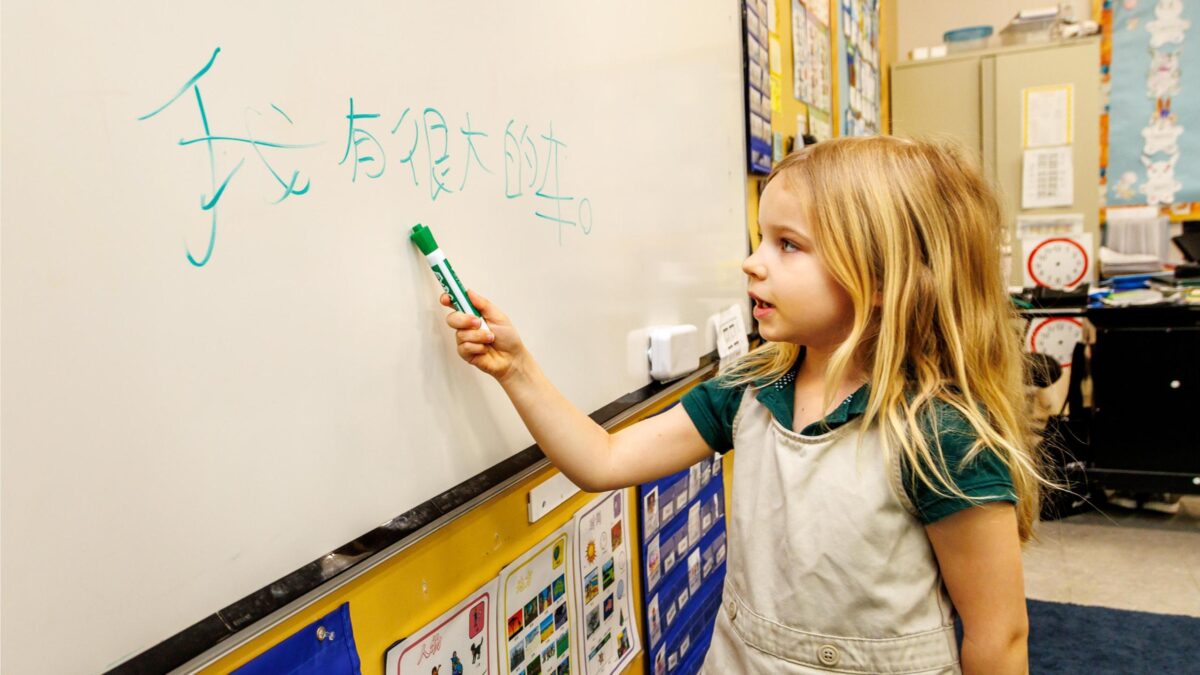
GLOBAL IMMERSION LEARNING
December 8, 2024
CBS New York Interview
February 14, 2025At HudsonWay Immersion School, we know that the biggest strides in language learning often happen in the classroom, where children are immersed in lessons and guided by expert teachers. However, complementing this with activities at home can make the process even more enriching and fun. Whether or not you speak the target language, there are plenty of creative ways to support your child’s bilingual development and enhance the skills they’re building at school. Here are five tips for younger and older children to help make language learning a natural part of everyday life.
For Younger Kids (2–6 Years Old): Playful Language Exposure
1. Talk About What You Know
Even if you don’t speak the language fluently, use simple words or phrases you’ve picked up (e.g., greetings or counting) during your daily routines. This effort shows your child the value of learning and makes the language part of everyday life.
2. Picture Books as Guides
Choose picture books in the target language with simple vocabulary and clear illustrations. Even if you can’t read fluently, pointing to pictures and learning words together creates a fun bonding experience.
3. Songs with Movement
Learn simple songs or rhymes in the target language with your child, even if you’re learning alongside them. Songs with actions or motions make the experience lively and memorable.
4. Daily Routines in the Target Language
Incorporate small, manageable phrases into daily activities, like saying “brush your teeth” or “time to eat” in the target language. Apps or flashcards can help you find translations for these phrases.
5. Celebrate Progress
Make language learning exciting by celebrating when your child learns new words or phrases. A fun sticker chart or small rewards can motivate them to practice regularly.
For Older Kids (6–12 Years Old): Encouraging Independence
1. Make It a Team Effort
Let your child teach you words or phrases in the language. This empowers them to take the lead and builds their confidence while involving you in their learning.
2. Create a Language Notebook
Encourage your child to keep a notebook where they write new words, draw pictures, or create short stories in the language. This helps them organize what they’ve learned while reinforcing vocabulary.
3. Cultural Exploration Through Activities
Plan activities like cooking a dish from a country where the language is spoken. Even if you don’t know the language, following recipes together introduces vocabulary and cultural awareness.
4. Interactive Games in the Target Language
Play games like charades or 20 Questions using vocabulary your child has learned. These interactive games are fun and focus on practicing the language without needing parental fluency.
5. Library Visits
Visit the library to find books or audiobooks in the target language. Listening together, even if you don’t understand everything, demonstrates that learning is a shared journey.
Even if you don’t speak the language your child is learning, your encouragement and involvement at home can make a world of difference. At HudsonWay Immersion School, we’re committed to nurturing your child’s bilingual journey, and your support enhances the skills they develop with us every day. By weaving these simple activities into your routine, you’re not only strengthening their language abilities but also fostering a deeper connection to their cultural and academic growth. Together, we can inspire a lifelong love of learning and language!





